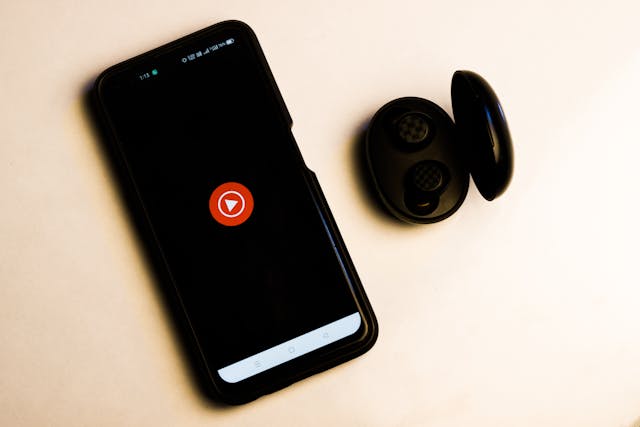The Ultimate Beginner’s Guide to Audiobooks
Imagine being transported into a story while cooking dinner, commuting to work, or even folding laundry. Audiobooks have revolutionized the way we read, making literature more accessible than ever before. Whether you’re looking to dive into fiction, explore nonfiction, or revisit classics in a new format, audiobooks provide a hands-free, eyes-free way to enjoy content anywhere. For those just discovering this format, there’s a whole world to explore—from choosing the right platform to finding narrators who bring stories vividly to life. If you’re curious to begin your journey into audiobooks, you’re not alone—millions are now opting for this immersive, flexible format.
 So, how do you get started? The first step is selecting a platform. Major players like Audible, Scribd, and Libro.fm offer extensive catalogs, subscription models, and user-friendly apps. Some libraries also provide access through apps like Libby or Hoopla, allowing you to borrow audiobooks for free. It’s important to choose a service that fits your budget, listening habits, and device preferences. Consider how often you listen, whether you prefer to buy or borrow, and if ownership of titles matters to you.
So, how do you get started? The first step is selecting a platform. Major players like Audible, Scribd, and Libro.fm offer extensive catalogs, subscription models, and user-friendly apps. Some libraries also provide access through apps like Libby or Hoopla, allowing you to borrow audiobooks for free. It’s important to choose a service that fits your budget, listening habits, and device preferences. Consider how often you listen, whether you prefer to buy or borrow, and if ownership of titles matters to you.
Next, it’s worth learning how to navigate audiobook genres. While fiction and thrillers dominate charts, you’ll also find biography, self-help, philosophy, and even poetry. The beauty of audiobooks lies in the performance—voice actors add emotion, nuance, and pacing that can completely transform your experience of a text. A great narrator can turn even a slow-paced story into a riveting performance. That’s why many seasoned listeners follow narrators like Julia Whelan, Bahni Turpin, or George Guidall just as much as they follow authors.
Length is another factor to consider. Some audiobooks run under three hours—perfect for a short trip—while others can span 30 hours or more. Many platforms allow you to adjust playback speed, a handy feature for those who want to move quickly through a title or slow down to savor a passage. This flexibility makes audiobooks ideal for both casual and deep listening, whether you want quick entertainment or detailed study.
If you’re new to the format, it’s wise to start with engaging, dialogue-rich books. Mysteries, memoirs, and young adult novels tend to translate well to audio thanks to dynamic pacing and clear structure. Authors like Neil Gaiman, Michelle Obama, and Stephen Fry often narrate their own works, which brings a layer of authenticity and intimacy. First-person narratives are especially powerful when spoken aloud, making you feel directly connected to the storyteller.
For non-native English speakers or those looking to improve their language skills, audiobooks can serve as a powerful tool. Listening regularly helps develop pronunciation, vocabulary, and comprehension in a natural, engaging way. Pairing audiobooks with written texts can strengthen literacy and make complex ideas more approachable. It’s a method used in many classrooms and language learning programs around the world.
Another benefit of audiobooks is their impact on accessibility. For individuals with visual impairments, learning disabilities, or attention challenges, audiobooks open the door to stories that may have once seemed out of reach. They remove physical and cognitive barriers, allowing more people to experience literature on their own terms. By offering multiple ways to consume content, audiobooks support a more inclusive reading culture.
Listening also invites a different kind of attention. While you might skim a written page, you’re more likely to absorb each word when it’s spoken aloud. Audiobooks slow down the act of “reading” in a way that can lead to deeper reflection. Many listeners report feeling more emotionally connected to the content—especially with memoirs or dramatic works. This depth of connection enhances the value of the reading experience itself.
Let’s not forget the practical advantages. Audiobooks fit into your life without demanding uninterrupted time. You can listen during a workout, a commute, or while winding down before bed. For busy parents, professionals, or students, audiobooks can make use of time that would otherwise go unfilled. They allow you to multitask while staying engaged with literature, ideas, and storytelling.
Still, it’s important to acknowledge that not every book suits every format. Dense academic texts, books with lots of charts, or heavily footnoted nonfiction may not be well-suited to audio. That said, many authors now write with audio in mind—simplifying structures or providing digital companion materials. Audio-first publishing is growing, and the industry is evolving rapidly to meet new listener needs.
Whether you’re a lifelong reader or a complete beginner, audiobooks offer a new lens through which to experience stories and ideas. With thoughtful narration, accessible platforms, and endless genres, it’s never been easier to dive in. Choose a book that excites you, put on your headphones, and press play—you might just discover a new kind of literary joy.

